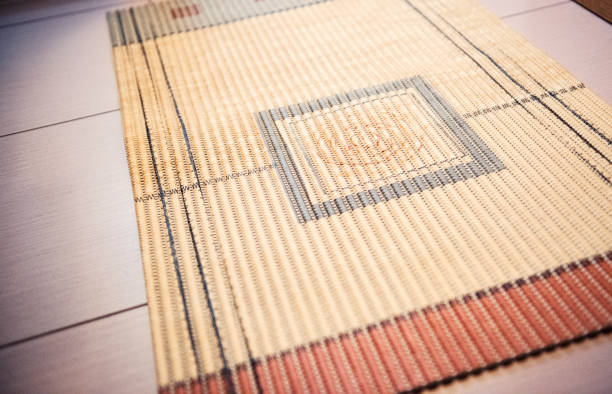Rugs play a pivotal role in interior design, adding warmth, texture, and style to a space. However, choosing the right placement for your rug can be a challenging task. The way you position your rug can significantly impact the overall aesthetic of a room. In this guide, we’ll explore three simple design tips to help you expertly place your rug, elevating the look and feel of your living spaces.
Define Zones with Area Rugs:
One effective way to utilize rugs in interior design is by defining specific zones within a room. Whether you have an open-concept living space or a multi-functional room, strategically placing area rugs can create distinct areas for different activities. Here’s how you can achieve this:
a. Living Room Seating Area:
Begin by placing a large area rug in the primary seating area of your living room. Ensure that the carpet is large enough for all the key pieces of furniture, such as the sofa, chairs, and coffee table, to sit comfortably on it. This arrangement not only ties the furniture together but also provides a cozy and cohesive feel to the space.
b. Dining Area:
If your living space shares an open floor plan with a dining area, consider using a rug to define the dining space. Place a rug under the dining table and chairs, ensuring it extends beyond the table’s edges to accommodate the chairs even when pulled out. This creates a visual separation between the living and dining areas while maintaining a harmonious flow.
c. Bedroom Retreat:
In the bedroom, a well-placed rug can enhance the overall comfort and style. Opt for a rug large enough to extend beyond the sides and foot of the bed. This not only adds a luxurious feel to the space but also provides a soft landing for your feet in the morning. For added symmetry, consider placing two smaller rugs on either side of the bed.
Layering Rugs for Depth and Texture:
Layering rugs is a versatile design technique that adds depth, texture, and visual interest to a room. By combining different rug sizes, shapes, and textures, you can create a unique and personalized look. Here’s how to master the art of rug layering:
a. Contrast Sizes:
Experiment with layering rugs of different sizes. For instance, place a larger, neutral rug as the base and layer a smaller, more vibrant, or patterned carpet on top. This creates a visually appealing contrast and draws attention to specific areas of the room, such as the seating arrangement or a focal point.
b. Mix Textures:
Combine rugs with varied textures to add tactile appeal to your space. For example, pair a plush, shaggy rug with a flat-woven or jute rug. This not only creates a sensory experience but also contributes to a more dynamic and visually intriguing design.
c. Define Spaces:
Use layered rugs to delineate different functional zones within a room. In a living room, layering rugs can help separate the entertainment area from a reading nook or a home office corner, giving each space its own identity.
Rug Placement for Small Spaces:
Small rooms can present a unique set of challenges when it comes to rug placement. However, with strategic placement, you can make even the smallest spaces feel larger and more inviting. Consider the following tips:
a. Wall-to-Wall Illusion:
To create the illusion of a larger space, choose a rug that spans the entire seating or living area. This wall-to-wall approach visually expands the room, making it feel more open and connected.
b. Floating Furniture:
In smaller rooms, avoid pushing furniture against the walls. Instead, float key pieces such as sofas and chairs on the rug. This not only maximizes the perceived space but also provides a cohesive and well-organized layout.
c. Optical Tricks:
Use rugs with subtle patterns or light colors in small spaces to trick the eye into perceiving more space. Avoid heavy patterns or dark colors that can make the room feel cramped. Additionally, choose a rug with a low pile to maintain a sense of airiness.
Conclusion:
In conclusion, the way you place your rugs can significantly impact the overall design and ambiance of your living spaces. Whether you’re defining zones, layering for texture, or enhancing a small space, thoughtful rug placement can elevate your interior design. Experiment with these simple tips to discover the perfect arrangement that suits your style and enhances the comfort and aesthetics of your home.

